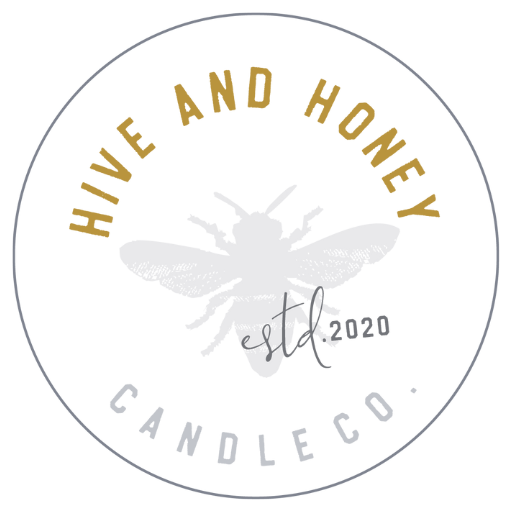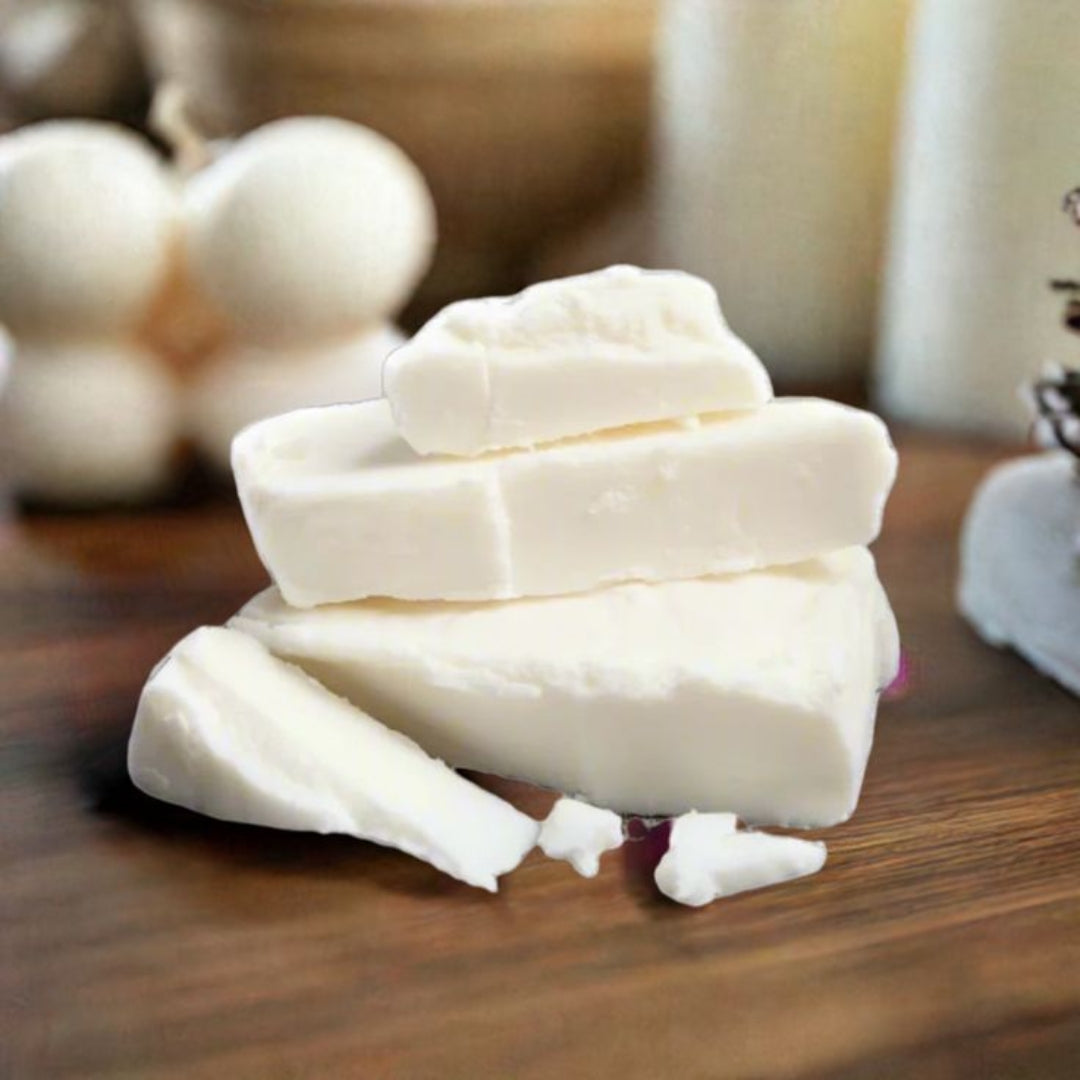
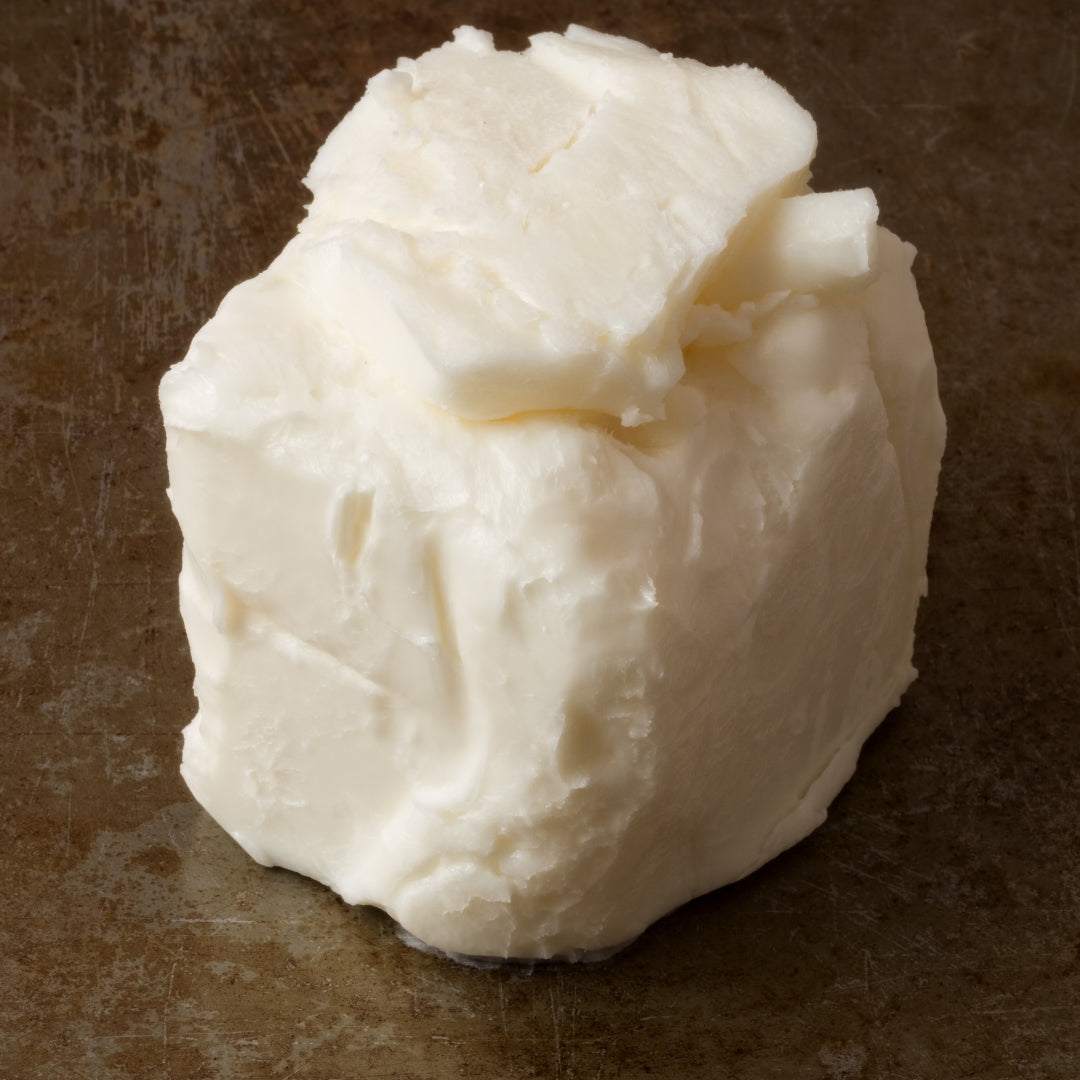
ParaSoy Luxury TitanWax | 5474 (Titan)
TitanWax ParaNatural 5474 is a versatile candle wax blend featuring a robust combination of paraffin and soy. Designed for ease of use, this formula incorporates a majority soy content, ensuring a smooth and consistent finish in candle making. This wax can easily handle an 10% fragrance load. This is a great wax for makers who prefer predominately soy wax. Similar to Problend 600. Made in Indiana.
Maker's Notes:
•Candle wax blend made with a combination of soy and FDA food-grade paraffin (over 50% soy) ingredients.
•Can be used for container candles.
•Gluten-free, toxin-free, paraben-free, and phthalate-free
•Vegan and cruelty-free
•Easy to use, single-pour wax - no heat gun required.
•Bright white color
•Even, slow burn with excellent adhesion
•Great hot/cold throw
•Handles 10% fragrance load, although we've found 8% to be the best.
| Melting Point: | 134°F |
| Average Pouring Temperature: | 155-165°F - Preheat vessels if room temperature is below 70°F |
| Curing: | We recommend a 1 to 2 week cure time for proper wicking and to maximize hot and cold throw. |
| Recommended Wicks: | We recommend CD, CDN, ECO, LX, and HTP candle wicks. Because of the higher melt point, I suggest wicking up 1 to 2 sizes from Soy 10 and Ec26. |
•Prepare vessels first, or prepare while wax is heating up. ie wick vessels and secure with wick centering bars before pouring in hot wax.
•Cut wax into smaller chunks. TitanWax is a soft enough wax where you can use a butter knife to score it and break it into smaller pieces.
•Heat to 210°F degrees, remove from the heat source, add fragrance oil and stir for 15-30 seconds. If you're adding dye, add dye and stir for an additional 15-30 seconds until fully blended.
•For consistently smooth results, the manufacturer recommends pouring between 155 - 165°F. However, I've had great results pouring around 190°F so feel free to experiment with this.
•For thick glass and or cooler room temperatures below 65-70°F, pre-heating the glass is recommended. For example, you can either place jars in the oven on the lowest setting, or use a heat gun to preheat jars.
•The maximum fragrance load is 10%, but higher fragrance loads should be tested per fragrance. Personally, I use between 8-9% fragrance load.
•I recommend allowing a 1-2 week cure time (ideally 2 weeks) for proper wicking and to maximize the cold and hot throw.
General Wick Guide (in process) - This is a newer wax for us so feel free to share what wicks work best for you and we can add it to our wick guide!
| Vessel Size (Inner Diameter) | Para-soy 5474 Wax |
| 2.0" - 2.50" |
CD 2, 3, 4 CDN 2, 3, 4 ECO 1, 2 HPSP 27, 30, 33, 36 HTP 31, 41 LX 8, 10 Premier 720 Zinc 34-30, 36-24-24 WOOD |
| 2.50" - 2.75" |
CD 4, 5, 6 |
| 2.75" - 3" |
CD 7, 8, 9 CDN 7, 8 ECO 2, 4 HPSP 45, 48, 51, 54, 57 HTP 52, 62, 72, 73 LX 14, 16 Premier 735, 740, 745 Zinc 44-24-18, 44-28-18, 44-32-18, 51-32-18 WOOD |
| 3" - 3.50" |
CD 8, 9, 10, 12 DOUBLE 2, 3 |
|
|
CD 12, 14, 16 DOUBLE 3, 4, 5 CDN 12, 14, 16 DOUBLE 3, 4, 5 ECO 10, 12, 14 DOUBLE 1, 2 HPSP 48, 51, 54, 57, 60, 63, 66 DOUBLE 18, 21, 24, 27, 30, 33, 36, 39 HTP 104, 105, 126 DOUBLE 52, 62, 72, 73 LX 18, 20, 22, 24, 26 DOUBLE 8, 10, 12 Premier 770, 775, 777, 780, 785, 790, 793, 795, 798, 799 DOUBLE 720, 725, 730, 735, 740, 745 Zinc 60-44-18, 62-52-18 DOUBLE 36-24-24, 44-20-18, 44-24-18, 44-28-18, 44-32-18 WOOD |
How do you calculate the amount of fragrance oil to use?
First, you need to know what percentage of fragrance oil you want to use. The average usage is 6%.
Here is a basic formula:
(oz of wax using) x (% of fragrance oil you want to use) = (oz of fragrance oil needed)
For example, let's say you are using two pounds of wax and want to use 6% fragrance oil.
First, you'll need to calculate the number of ounces of wax you have:
2 x 16 (number of oz in 1 pound) = 32oz
Plug these numbers into your formula:
32 x 6% = 1.92oz
You can round up to 2oz for easy measuring on your scale.
Below, I created an easy fragrance load calculator where it will calculate the amount of fragrance oil needed in both ounces and grams.
Angie's Wick Testing Results for 5474 Wax
| Vessel | Wicks |
| Libbey 2917 | 2 x Htp 41 |
| Heirloom | 2 x Eco .5, 2 x Eco .75, 2 x Cdn 2 |
| 12oz Aura | 2 x Eco .75 |
Choose options


WICK TESTING BLOG
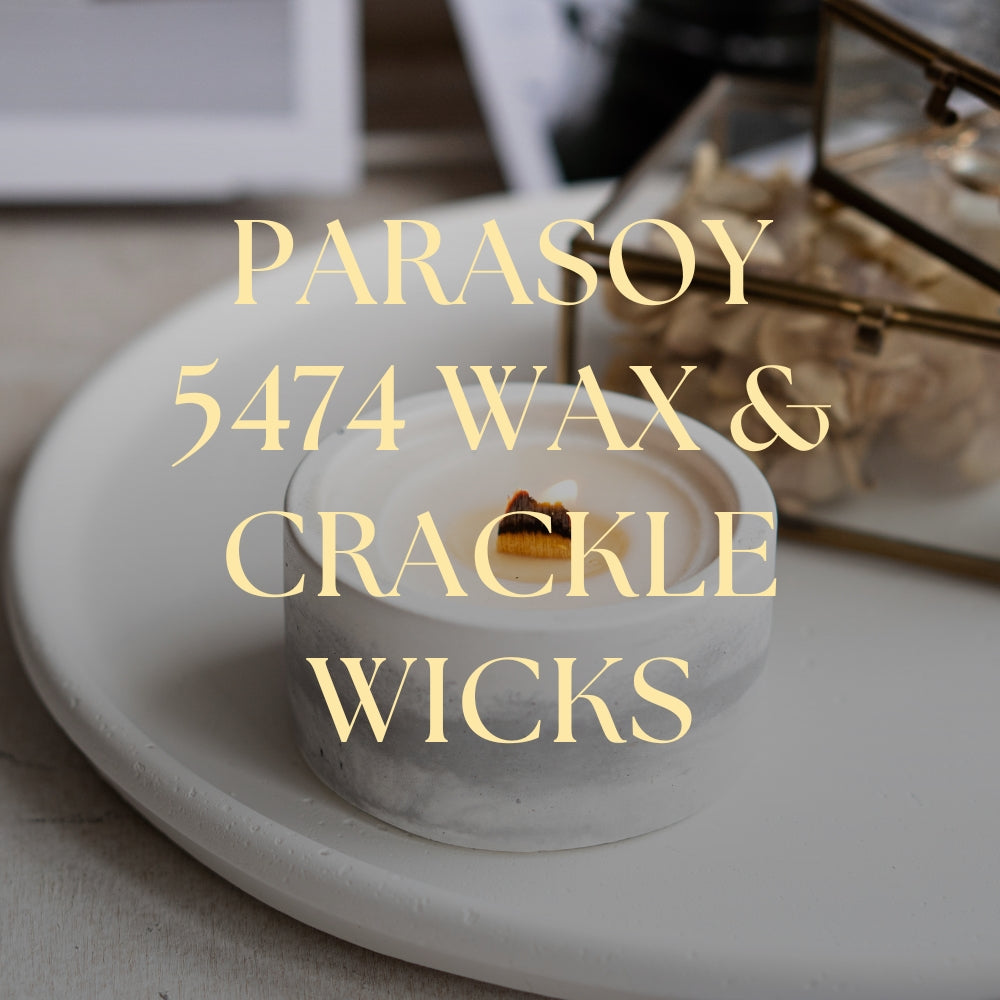
ParaSoy 5474 Wax & Crackle Wood Wicks
I'm currently testing the Titan Para-soy 5474 candle wax with Crackle Wood Wicks. I'm hoping that this will be helpful to some when narrowing down which wicks to use. Feel free to adjust based on...
Read more
I'm currently testing the Titan Para-soy 5474 candle wax with HPSP wicks. I'm hoping that this will be helpful to some when narrowing down which wicks to use. Feel free to adjust based on your wa...
Read more
I'm currently testing the Titan Para-soy 5474 candle wax with Lx wicks. I'm hoping that this will be helpful to some when narrowing down which wicks to use. Feel free to adjust based on your wax/...
Read more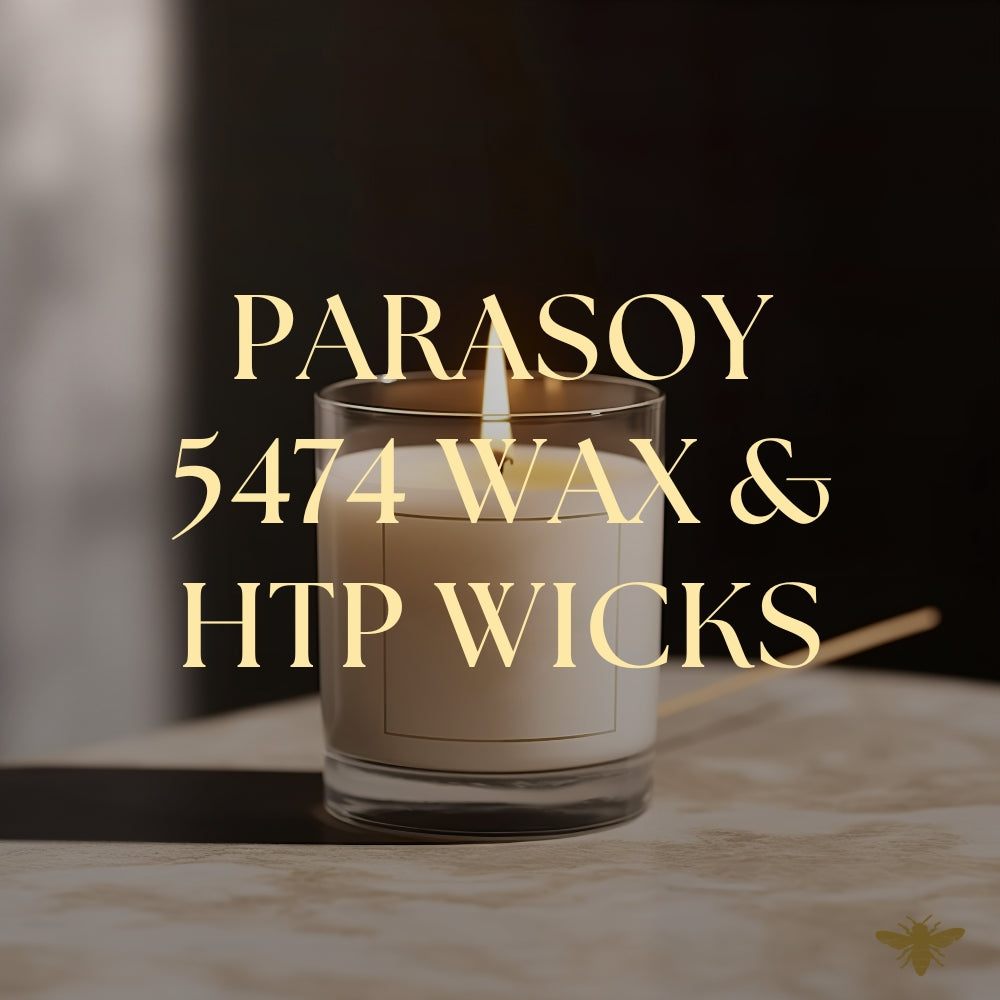
I'm currently testing the Titan Para-soy 5474 candle wax with HTP candle wicks. I'm hoping that this will be helpful to some when narrowing down which wicks to use. Feel free to adjust based on y...
Read more